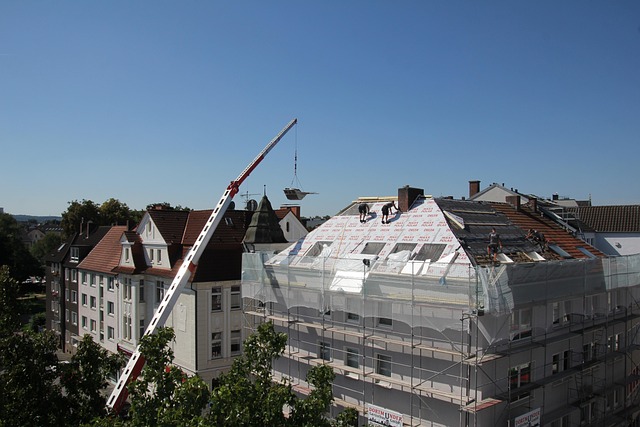Regular professional roof inspections are vital for home maintenance, saving homeowners money and time by preventing costly repairs. Roofers assess shingles, flashing, gutters, underlayment, and structural integrity using advanced tools and techniques to catch issues early, including leaks and decay. By addressing problems promptly, they protect homes from elemental damage and prolong roof lifespan.
Regular roof inspections are crucial for maintaining your home’s integrity and protecting against costly repairs. This article guides you through the essentials of roofing assessments, focusing on leak detection, decay identification, and structural soundness. We’ll explore the key components roofers examine, the tools they use, common issues found, and why these checks are vital for any homeowner. By understanding roof inspections, you’ll empower yourself to make informed decisions about your property’s health.
- Understanding the Importance of Regular Roof Inspections
- Key Components Rooftops Experts Inspect for Leaks and Decay
- Tools and Techniques Used in Comprehensive Roof Assessments
- Identifying Signs of Structural Integrity Issues During an Inspection
- Common Problems Found During Routine Roof Maintenance Checks
Understanding the Importance of Regular Roof Inspections
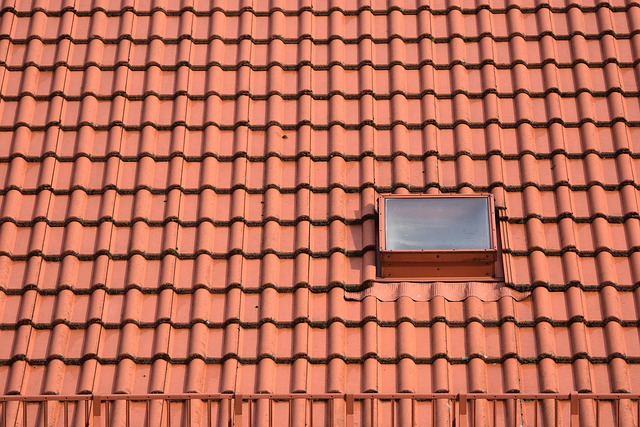
Regular roof inspections are a crucial aspect of home maintenance that many homeowners often overlook. A roofer’s expertise is invaluable in identifying potential issues before they become major problems. By scheduling routine checks, you can catch leaks early on, preventing water damage and mold growth within your home. Moreover, these inspections allow for the detection of decay or structural weaknesses in the roof, ensuring the overall integrity of your property.
Prevention is key when it comes to roofing. A professional roofer can assess the condition of shingles, flashing, and gutters, providing peace of mind that your home is protected from the elements. Regular inspections also help in making informed decisions about future repairs or replacements, saving you time and money in the long run.
Key Components Rooftops Experts Inspect for Leaks and Decay
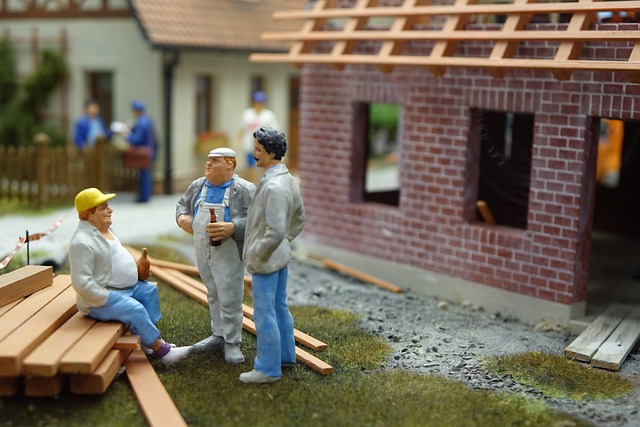
When a roofer inspects a roof for leaks and decay, several key components are evaluated to ensure structural integrity and longevity. Initially, they assess the roofing material—asphalt shingles, metal, or tiles—for any visible signs of damage, missing pieces, or excessive wear. Regular maintenance often involves cleaning gutters and drains to prevent water buildup, which can lead to rot or leakages. The underlayment, a protective layer beneath the shingles, is also scrutinized for rips, tears, or loose connections that could compromise the roof’s defense against moisture.
Furthermore, experts will inspect the flashing—the materials used to seal joints and vents—for cracks or damage. This is crucial as flashing prevents water from seeping into the gaps around chimneys, pipes, and other protrusions. Lastly, they examine the overall structure for any signs of sagging, misalignment, or weakened supports, which could indicate structural decay or instability that requires immediate attention from a qualified roofer.
Tools and Techniques Used in Comprehensive Roof Assessments
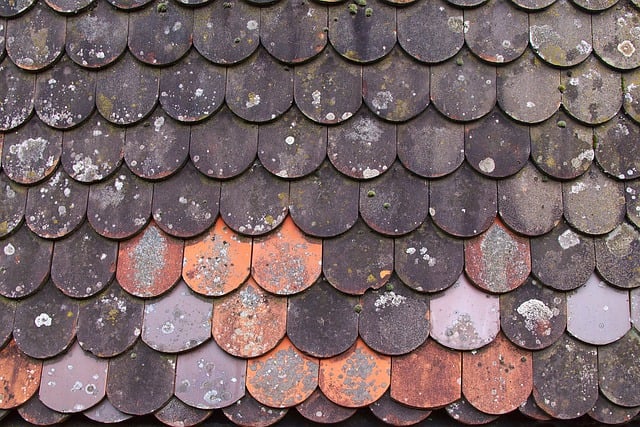
Comprehensive roof assessments require a roofer to utilise a variety of tools and techniques for effective inspection. These include specialized ladders, torches, and borescopes for accessing hard-to-reach areas. Visual inspection is crucial, where roofers use their expertise to spot signs of leaks, missing shingles, or damaged underlayment.
Advanced technologies such as moisture meters and thermal imaging cameras play a significant role in identifying hidden issues like water intrusion or dry rot. These tools allow roofers to pinpoint problem areas accurately, ensuring a thorough assessment. Regular maintenance and prompt repairs, guided by these techniques, extend the lifespan of roofs and prevent costly replacements.
Identifying Signs of Structural Integrity Issues During an Inspection
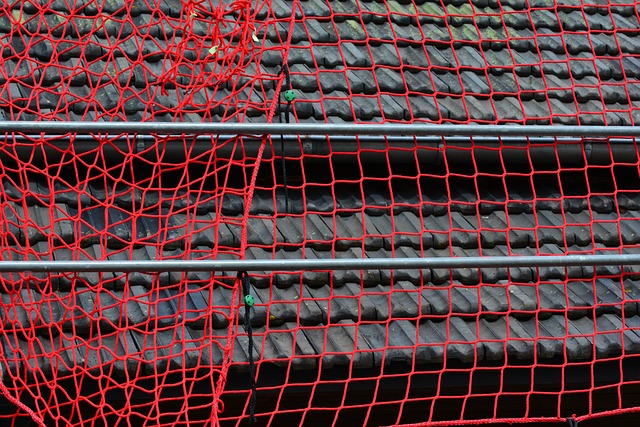
During a roof inspection, roofer professionals look for signs of structural integrity issues that might indicate serious problems beneath the surface. One of the key indicators is uneven or distorted shingles, which could be an early sign of weak trusses or support beams. Another red flag is noticeable gaps between the roof and walls, suggesting potential misalignments or settling in the foundation.
Roofer experts also scrutinize the flashing around chimneys, vents, and other protrusions, checking for cracks, corrosion, or poor sealing. These areas are particularly vulnerable to leaks and water damage, which can compromise the structural integrity over time. Additionally, they inspect the roof’s underlayment for moisture, mold, or decomposition, as these issues often signal more extensive problems within the roofing system.
Common Problems Found During Routine Roof Maintenance Checks
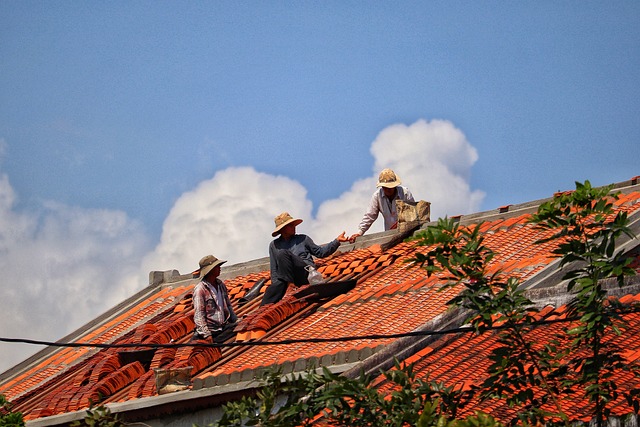
During routine roof maintenance checks, roofer professionals often encounter several common problems that can compromise a structure’s integrity and lead to costly repairs if left unchecked. One of the most prevalent issues is the presence of leaks, which may not always be immediately apparent but can cause significant damage over time. These leaks can originate from various sources, such as loose or damaged shingles, flashing issues around chimneys and vents, or even cracks in the roof’s underlayment.
Another frequent concern is decay, particularly in areas where moisture accumulation is common. Wood beams, trusses, and sheathing are particularly vulnerable to rot and deterioration, which can weaken the overall structural support of the roof. Regular inspections allow roofers to identify these problems early on, enabling them to recommend and implement effective solutions before decay spreads or water damage occurs.
Regular roof inspections are a crucial task, often overlooked but vital for maintaining your home’s integrity. By hiring a professional roofer, you ensure that any leaks, decay, or structural issues are identified early. This proactive approach saves time and money in the long run by preventing minor problems from turning into major, costly repairs. Don’t wait until it’s too late—take control of your roof’s health today.
